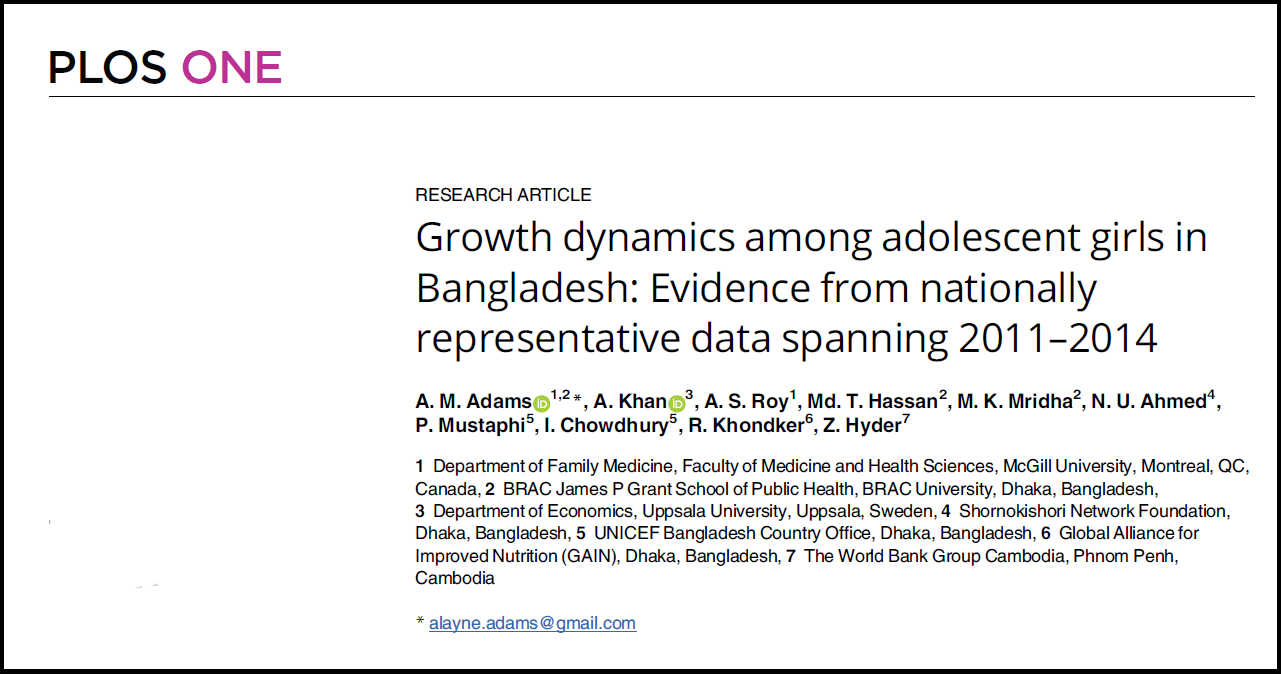Growth dynamics among adolescent girls in Bangladesh: Evidence from nationally representative data spanning 2011–2014
A research paper has recently been published on the PLOS One journal studying biological growth dynamics of adolescents girls in Bangladesh. The study has been authored by multiple researcher and academicians from Bangladesh and abroad.
The study assesses the dynamics of growth among adolescent girls in Bangladesh, providing insight about critical junctures where faltering occurs and where immediate interventions are warranted.
Download research paper: Growth dynamics among adolescent girls in Bangladesh 2011-2014
Summary
Adolescence is the last opportunity to reverse any growth faltering accumulated from fetal life through childhood and it is considered a crucial period to optimize human development. In Bangladesh, a growing double burden of underweight and obesity in adolescents is recognized, yet limited data exists on how, when, and where to intervene.
The data was collected from Bangladesh’s Food Security and Nutrition Surveillance Project collected between 2011 and 2014 to document the age dynamics of weight and linear growth. Height-for-age z-score (HAZ) in Bangladeshi girls deteriorates throughout adolescence and especially during the early years. Mean HAZ decreases by 0.20 standard deviations (sd) per year in early adolescence (10–14 years) vs 0.06 sd/year during late adolescence (15–19 years), while stunting increases by 16 percentage points (pp) vs 6.7 pp, respectively. Conversely, BMI-for-age z-score (BAZ) increases by 0.13 sd/year in early adolescence vs 0.02 sd/year in late adolescence, and underweight decreases by 12.8 pp vs 3.2 pp. Adolescent girls in all socioeconomic groups show a similar pattern of HAZ and BAZ dynamics, but the curve for the richest quintile stays above that of the poorest across all ages.
Therefore, it was found that the trends and levels of stunting and underweight among adolescent girls in Bangladesh are worrisome, suggesting substantial linear growth faltering in early adolescence, with improving weight-for-age occurring only as linear growth slows and stops. Given the rising burden of non-communicable diseases (NCDs) in Bangladesh and emerging evidence of the link between stunting and later chronic diseases, greater attention to adolescent growth and development is needed. The findings suggest that, to address stunting, interventions in early adolescence would have the greatest benefits. School-based interventions could be a way to target this population.
Source: PLOS One


